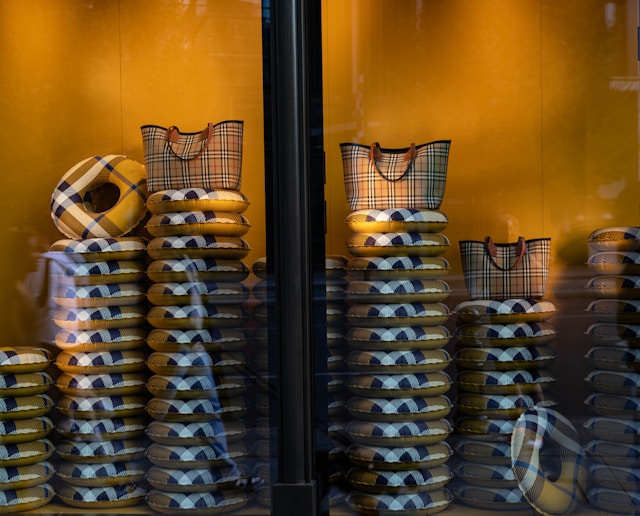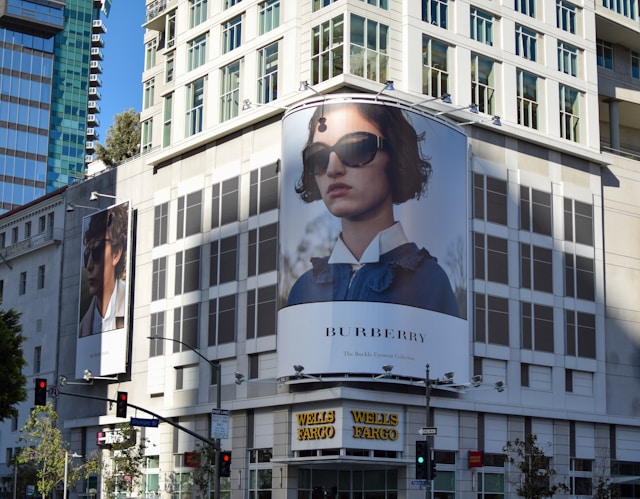Burberry has consistently set itself apart from competitors in the world of high-fashion through a combination of innovative marketing strategies, a strong commitment to brand heritage, and an ability to adapt to changing market dynamics. For marketing professionals seeking inspiration, Burberry’s approach offers a masterclass in balancing tradition with innovation, leveraging digital platforms, and engaging customers through storytelling. This article explores the key elements of Burberry’s marketing strategy, with examples of successful campaigns that have reinforced its position as a global luxury brand.
Heritage and Innovation: A Delicate Balance
Burberry, founded in 1856, has a rich heritage that it skillfully incorporates into its marketing. The brand is synonymous with British luxury and craftsmanship, particularly known for its iconic trench coat. Maintaining this heritage while innovating in marketing and product offerings has been central to Burberry’s strategy.
The brand’s focus on heritage is evident in its campaigns that often highlight classic designs and British culture. However, Burberry’s success lies in not resting on its laurels. It consistently pushes boundaries by integrating modern technology and new media to stay relevant. For instance, Burberry was one of the first luxury brands to embrace social media and digital marketing, setting a precedent for others in the industry.

Digital Pioneers: Embracing Technology Early
Burberry’s early adoption of digital technology has been a cornerstone of its marketing success. Under the leadership of former CEO Angela Ahrendts and creative director Christopher Bailey, Burberry embarked on a digital transformation that set it apart from its peers.
In 2009, Burberry launched “The Art of the Trench,” an interactive website where users could upload and share photos of themselves wearing Burberry trench coats. This campaign not only celebrated the brand’s signature product but also fostered a sense of community and engagement among its customers. The platform allowed Burberry to leverage user-generated content, enhancing brand loyalty and authenticity.
Another significant digital innovation was the “Burberry Acoustic” project, launched in 2010. This initiative featured performances by emerging British musicians, showcasing Burberry’s support for the arts and reinforcing its British heritage. The performances were shared across Burberry’s digital platforms, driving traffic and engagement while aligning the brand with creativity and innovation.
Social Media Mastery
Burberry’s social media strategy is a textbook example of how luxury brands can effectively use these platforms to connect with their audience. With a strong presence on Instagram, Facebook, Twitter, and Snapchat, Burberry has created a cohesive and engaging digital persona.
A key aspect of Burberry’s social media success is its focus on visual storytelling. High-quality images and videos that capture the essence of the brand’s identity are central to its content strategy. For example, the brand’s Instagram feed is a carefully curated mix of product shots, behind-the-scenes content, and glimpses of British culture, all reinforcing the brand’s luxury positioning.
Burberry also excels at leveraging social media for real-time engagement. During fashion shows, the brand uses platforms like Instagram and Snapchat to provide live updates and behind-the-scenes content, creating a sense of exclusivity and immediacy. This approach not only generates excitement among followers but also makes them feel like insiders, strengthening their connection to the brand.

Personalized Customer Experience
Personalization has become a key focus for Burberry, recognizing that today’s consumers expect tailored experiences. The brand has invested heavily in data analytics to understand customer preferences and behavior, allowing it to deliver personalized marketing messages and product recommendations.
One notable example of Burberry’s personalized marketing is its use of RFID (radio-frequency identification) technology in stores. This technology is embedded in clothing items and allows sales associates to access detailed information about the product and provide personalized recommendations to customers. It also enables interactive digital displays that showcase how the item can be styled, enhancing the in-store experience.
Burberry’s mobile app further exemplifies its commitment to personalization. The app offers a range of features, including personalized content, recommendations, and the ability to book in-store appointments. By integrating digital and physical shopping experiences, Burberry ensures that customers receive a seamless and personalized experience, whether they are shopping online or in-store.
Engaging Campaigns: A Case Study Approach
To truly understand Burberry’s marketing prowess, it’s essential to examine some of its most successful campaigns. These campaigns highlight how Burberry combines heritage, innovation, and storytelling to create compelling marketing messages.
1. The Burberry Kisses Campaign
In 2013, Burberry launched the “Burberry Kisses” campaign in partnership with Google. This interactive campaign allowed users to send virtual kisses to loved ones via email and social media. Users could capture their kiss using their smartphone or computer camera, and the digital kiss would then be sealed with a Burberry lipstick shade before being sent.
The campaign cleverly combined technology with emotion, creating a memorable and shareable experience. It also reinforced Burberry’s image as a brand that values innovation and personal connection. The use of Google’s technology showcased Burberry’s willingness to experiment with new digital tools, keeping the brand at the forefront of technological advancements in marketing.

2. The Burberry Festive Campaigns
Burberry’s festive campaigns are annual highlights that generate significant buzz and engagement. These campaigns often feature star-studded casts and heartwarming narratives that resonate with audiences during the holiday season.
The 2016 festive campaign, “The Tale of Thomas Burberry,” is a standout example. This campaign took the form of a cinematic short film that dramatized the life of Burberry’s founder, Thomas Burberry. Directed by Asif Kapadia and featuring actors like Domhnall Gleeson, Sienna Miller, and Lily James, the film combined historical elements with a compelling narrative.
By creating a high-quality film, Burberry not only celebrated its heritage but also captivated audiences with a story that was both informative and emotionally engaging. The campaign was widely shared on social media, generating millions of views and reinforcing Burberry’s status as a luxury brand with a rich history and a knack for storytelling.
3. The “From London with Love” Campaign
In 2014, Burberry launched the “From London with Love” campaign, featuring a festive short film starring Romeo Beckham. The film showcased Burberry’s holiday collection through a love story set in London, blending elements of dance, fashion, and romance.
This campaign was a masterclass in visual storytelling. The film’s high production values, combined with the charm of a young Beckham, created a captivating narrative that resonated with audiences. The campaign’s success was reflected in its widespread sharing on social media and positive coverage in the press.
4. Burberry’s Lunar New Year Campaigns
Recognizing the importance of the Chinese market, Burberry has consistently created targeted campaigns to celebrate Lunar New Year. These campaigns blend traditional Chinese elements with Burberry’s luxury aesthetic, appealing to Chinese consumers while maintaining the brand’s identity.
The 2020 Lunar New Year campaign, for example, featured a short film and a series of images showcasing the special edition collection. The campaign highlighted family values and new beginnings, themes central to Lunar New Year celebrations. By aligning its messaging with cultural values, Burberry successfully connected with Chinese consumers on an emotional level, strengthening its presence in this key market.
Collaborations and Partnerships
Collaborations and partnerships have played a significant role in Burberry’s marketing strategy, allowing the brand to reach new audiences and create buzz around its products.
One notable collaboration was with the British artist Damien Hirst for the 2013 “Burberry Prorsum” collection. Hirst’s distinctive artwork was incorporated into the designs, creating a unique and visually striking collection that garnered significant media attention.
Another successful partnership was with the Chinese actress and singer Kris Wu, who became Burberry’s brand ambassador in 2016. This collaboration helped Burberry tap into Wu’s massive fan base in China, enhancing the brand’s appeal among younger Chinese consumers.
These collaborations demonstrate Burberry’s ability to blend art, culture, and fashion in its marketing, creating products and campaigns that resonate with diverse audiences.
Sustainability and Corporate Responsibility
In recent years, sustainability has become a critical focus for Burberry. The brand has launched several initiatives to reduce its environmental impact and promote ethical practices, aligning with the growing consumer demand for sustainable and responsible fashion.
Burberry’s “ReBurberry” program, launched in 2020, is one such initiative. The program aims to reduce waste and promote circular fashion by encouraging customers to return unwanted Burberry items, which are then repaired, repurposed, or recycled. The initiative not only addresses sustainability concerns but also reinforces Burberry’s commitment to quality and craftsmanship.
Burberry has also committed to becoming carbon neutral by 2022 and has implemented several measures to achieve this goal, including using renewable energy, reducing waste, and promoting sustainable materials. These efforts are communicated through the brand’s marketing channels, enhancing its reputation as a socially responsible luxury brand.
Lessons for Marketing Professionals
Burberry’s marketing strategy offers several key takeaways for marketing professionals looking to emulate its success:
- Embrace Digital Transformation: Burberry’s early adoption of digital technology and social media set it apart from competitors. Investing in digital tools and platforms can enhance engagement and reach, especially in today’s increasingly digital world.
- Leverage Storytelling: Burberry’s campaigns are built on compelling narratives that resonate with audiences emotionally. Crafting stories that align with your brand’s values and identity can create a deeper connection with customers.
- Balance Heritage and Innovation: Burberry has successfully maintained its heritage while embracing modern marketing techniques. Striking this balance can help brands stay relevant while preserving their unique identity.
- Personalize Customer Experiences: Burberry’s focus on personalization, both online and in-store, enhances customer satisfaction and loyalty. Utilizing data analytics to understand and cater to individual preferences can significantly improve customer relationships.
- Engage with Cultural Moments: Burberry’s targeted campaigns for events like Lunar New Year demonstrate the importance of aligning marketing efforts with cultural moments. This approach can create more meaningful and impactful connections with diverse audiences.
- Commit to Sustainability: Burberry’s sustainability initiatives reflect its commitment to ethical practices. Embracing sustainability not only meets consumer demand but also enhances brand reputation and loyalty.
Burberry’s marketing strategy is a blend of tradition and innovation, digital prowess, and a commitment to storytelling. By embracing technology, personalizing customer experiences, and engaging with cultural moments, Burberry has maintained its status as a leading luxury brand. For marketing professionals, Burberry’s success offers valuable insights into how to create compelling and effective marketing strategies in the modern age. Through a combination of heritage, innovation, and a strong focus on customer engagement, Burberry continues to inspire and set the standard for excellence in the fashion industry.

